SUBUR
Tempeh fermentation for a Nordic contextSUBUR
SUMMARY
Subur finds its purpose in the production of tempeh, a food product made by the fermentation of beans with the fungus Rhizopus oligosporus.
From its heritage in Indonesian tradition, soybeans combined with a starter culture, are packed in banana leaves and let ferment at room temperature for 40 hours.
As the food product has gained traction in the West, understandably for its tremendous values as food at a low cost, difficulty arises in the production.
The design solution provided removes waste from the tempeh production, while retaining natural heat, thus lowering the need of added. Further, it incorporates only cyclic materials.
GOAL
The task is to identify a linear process of food production, in the context of southern Sweden, and provide design solutions to facilitate a more cyclic production.
Subur finds its purpose in the production of tempeh, a food product made by the fermentation of beans with the fungus Rhizopus oligosporus.
From its heritage in Indonesian tradition, soybeans combined with a starter culture, are packed in banana leaves and let ferment at room temperature for 40 hours.
As the food product has gained traction in the West, understandably for its tremendous values as food at a low cost, difficulty arises in the production.
The design solution provided removes waste from the tempeh production, while retaining natural heat, thus lowering the need of added. Further, it incorporates only cyclic materials.
GOAL
The task is to identify a linear process of food production, in the context of southern Sweden, and provide design solutions to facilitate a more cyclic production.
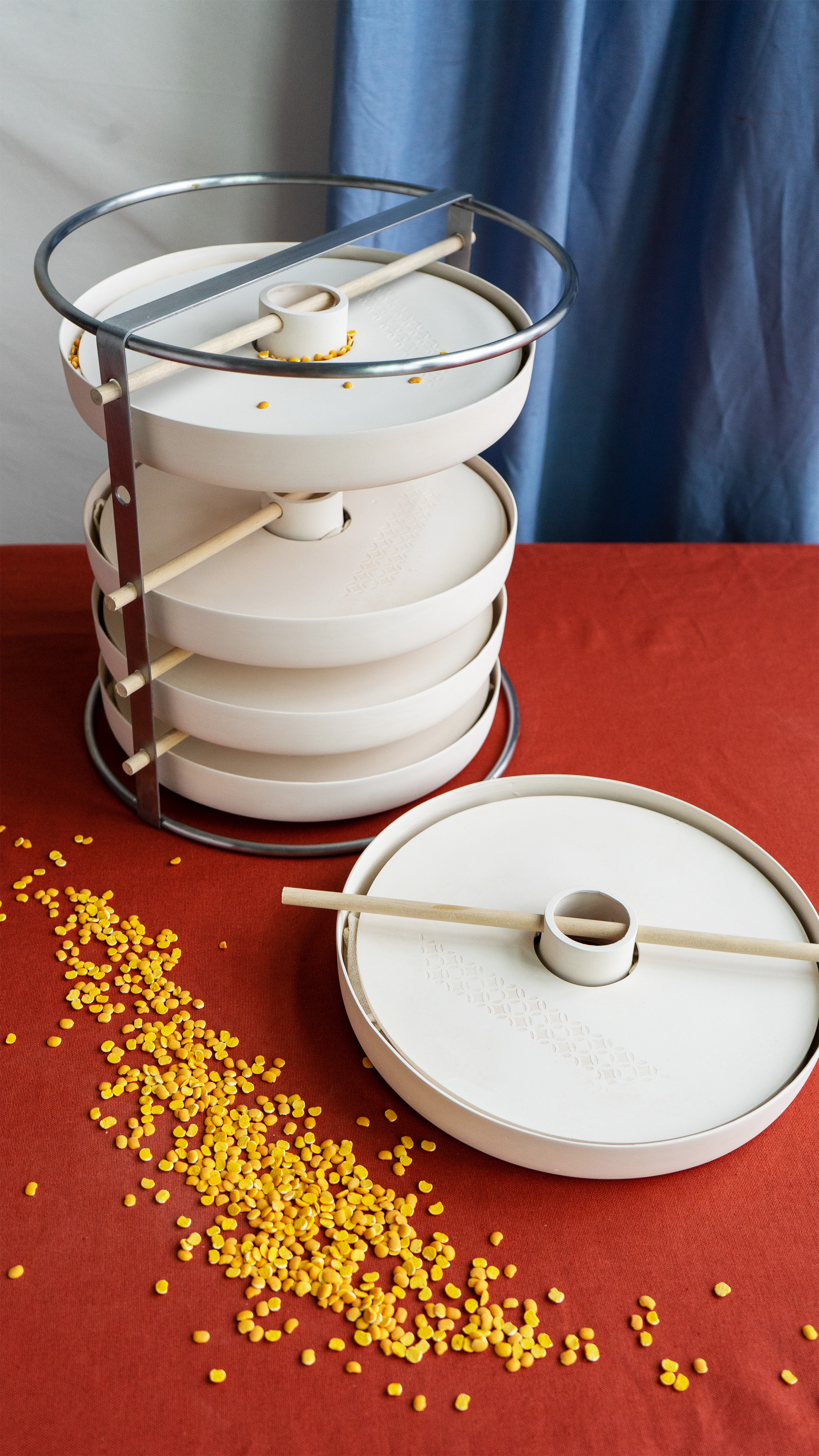
ROLE
Solo project, in cooperation with producer Kuno Tempeh
MADE WITH
Procreate, Fusion 360
Solo project, in cooperation with producer Kuno Tempeh
MADE WITH
Procreate, Fusion 360
APPLIED SKILLS
Project Mgmt,
Qualitative User + Market Research,
Sketching, Slipcasting, Metal work.
3D-Modeling, 3D-Printing, CNC.
Project Mgmt,
Qualitative User + Market Research,
Sketching, Slipcasting, Metal work.
3D-Modeling, 3D-Printing, CNC.
SUBUR / ISSUE

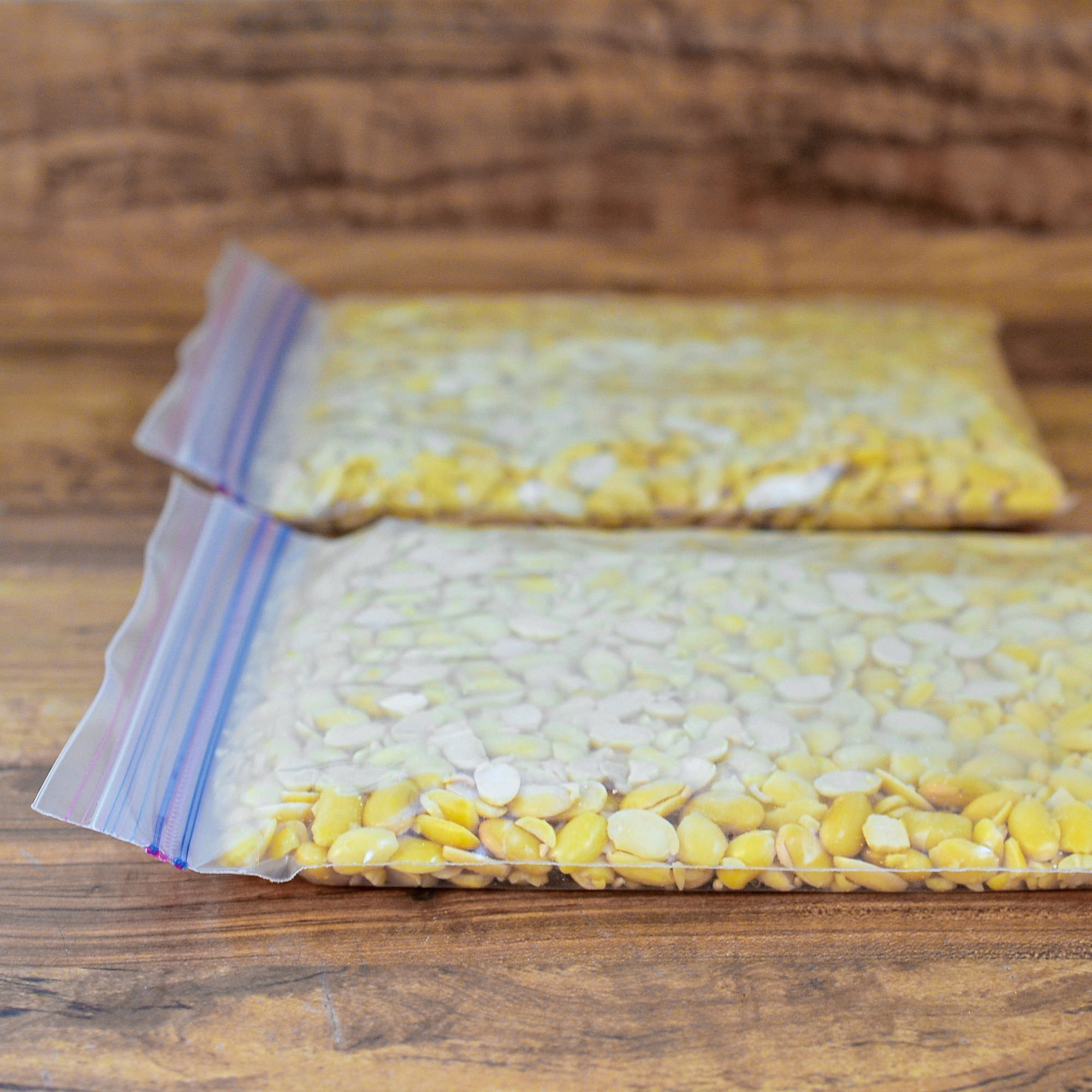
New issues arises as the process, traditionally using banana leaves to contain the bean mas during fermentation, moves to the context of Skåne. Either it relies on the far import of leaves which can only be reused once, or the use of poked one-time use plastic bags.
The sensitive process set several constraints on its surroundings:
The sensitive process set several constraints on its surroundings:
- No direct airflow
- Breathing container
- Retaintion of natural heat
SUBUR / MATERIAL RESEARCH
The identification of a cyclic material providing heat retention while being breathable, and protective, is deemed of high relevance.
Wood, stone and ceramics where investigated. While wood would degrade over time, and stone being hard to form, the final choice fell on terra cotta. Due to its natural characteristics of being breathable, heat retaining, and easy to form into beneficial geometry.
Wood, stone and ceramics where investigated. While wood would degrade over time, and stone being hard to form, the final choice fell on terra cotta. Due to its natural characteristics of being breathable, heat retaining, and easy to form into beneficial geometry.
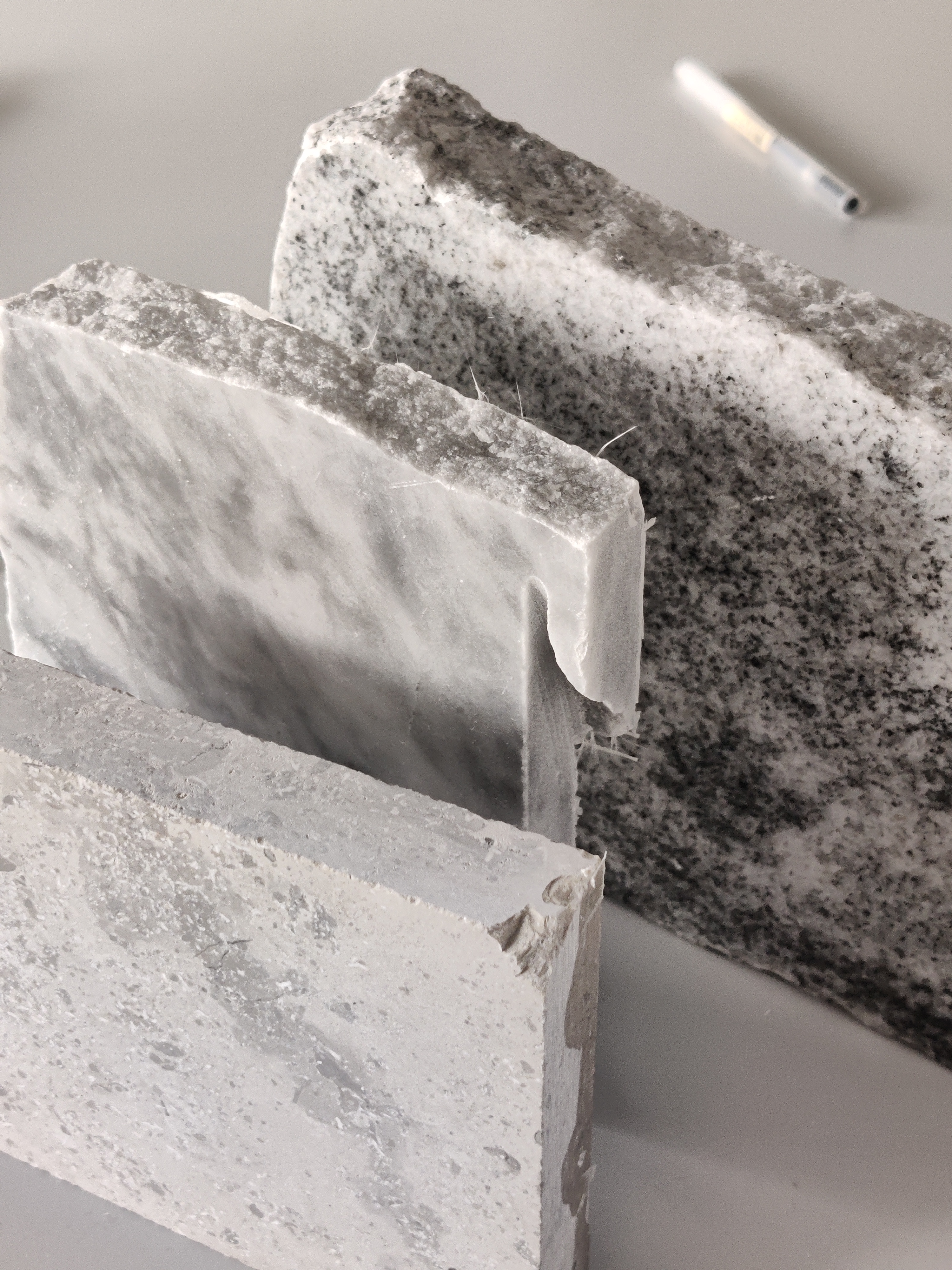
SUBUR / GEOMETRY RESEARCH


To reduce the necessity for additional heat, prioritizing the retention
of natural heat within the process is crucial. The aim is for the
process to potentially become self-sustaining once initiated. However,
experiments using heat retaining trays indicate issues with uneven heat
distribution causing overheating in certain areas, resulting in fungus
fatality.
SUBUR / IDEATION

SUBUR / BUILD

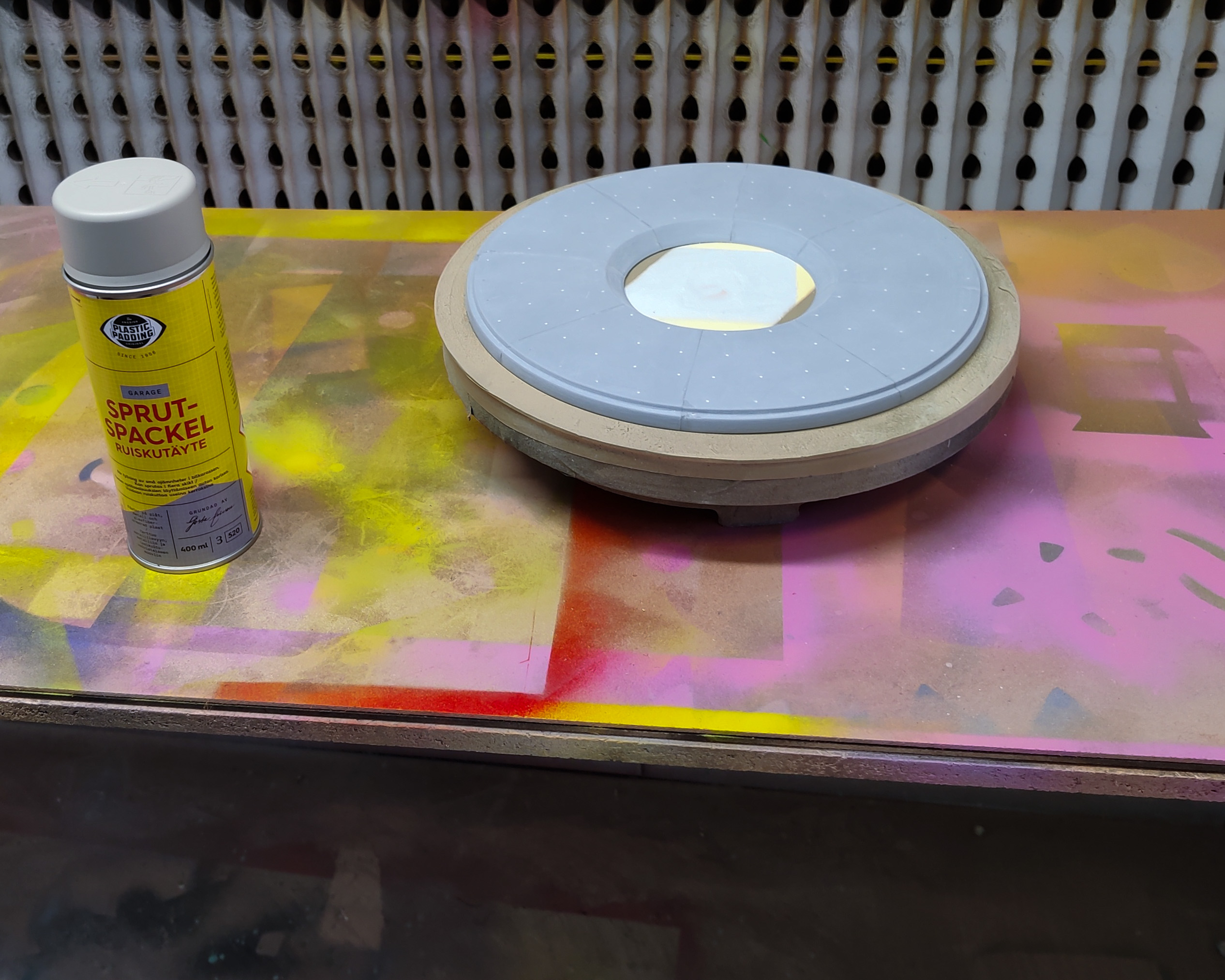
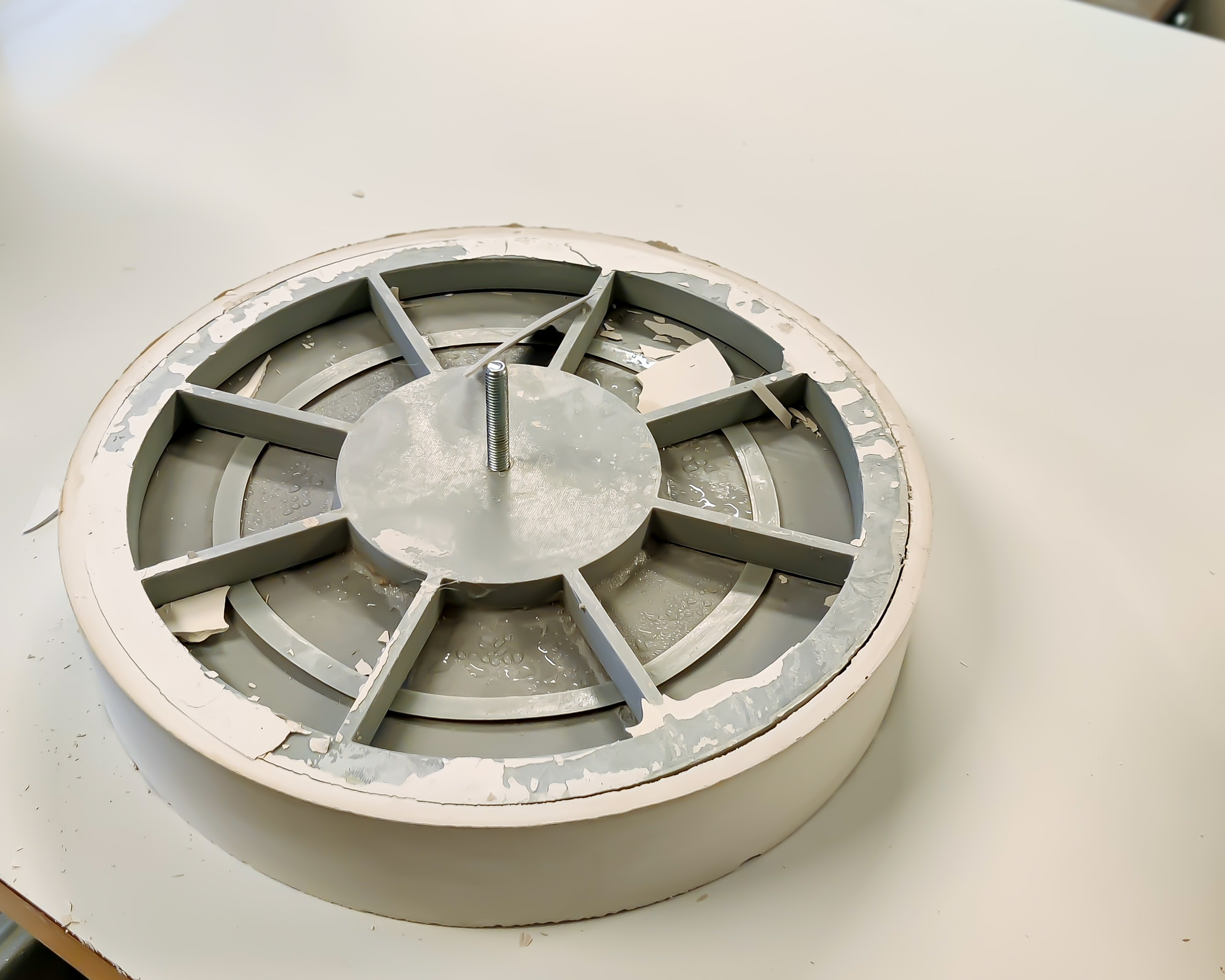

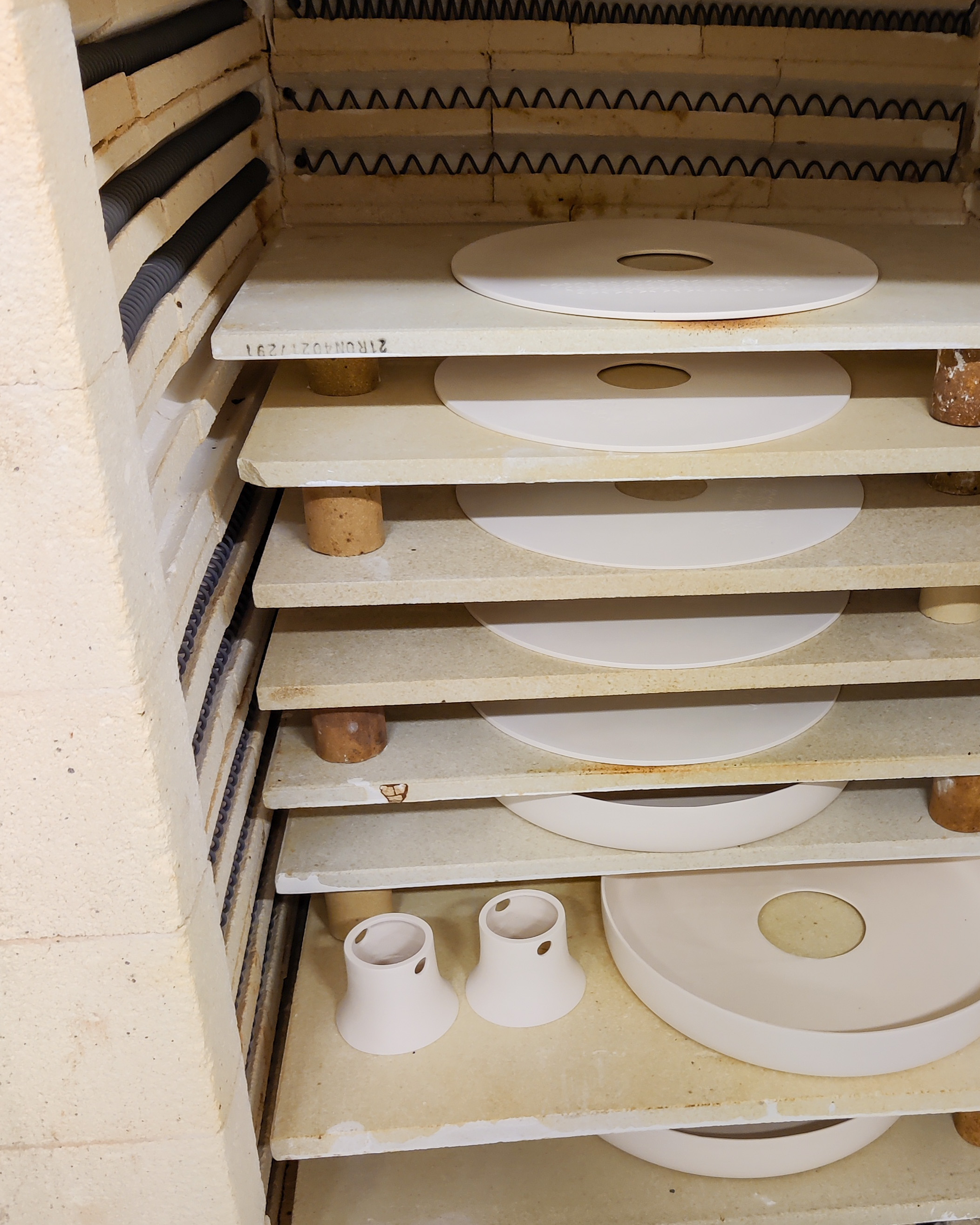
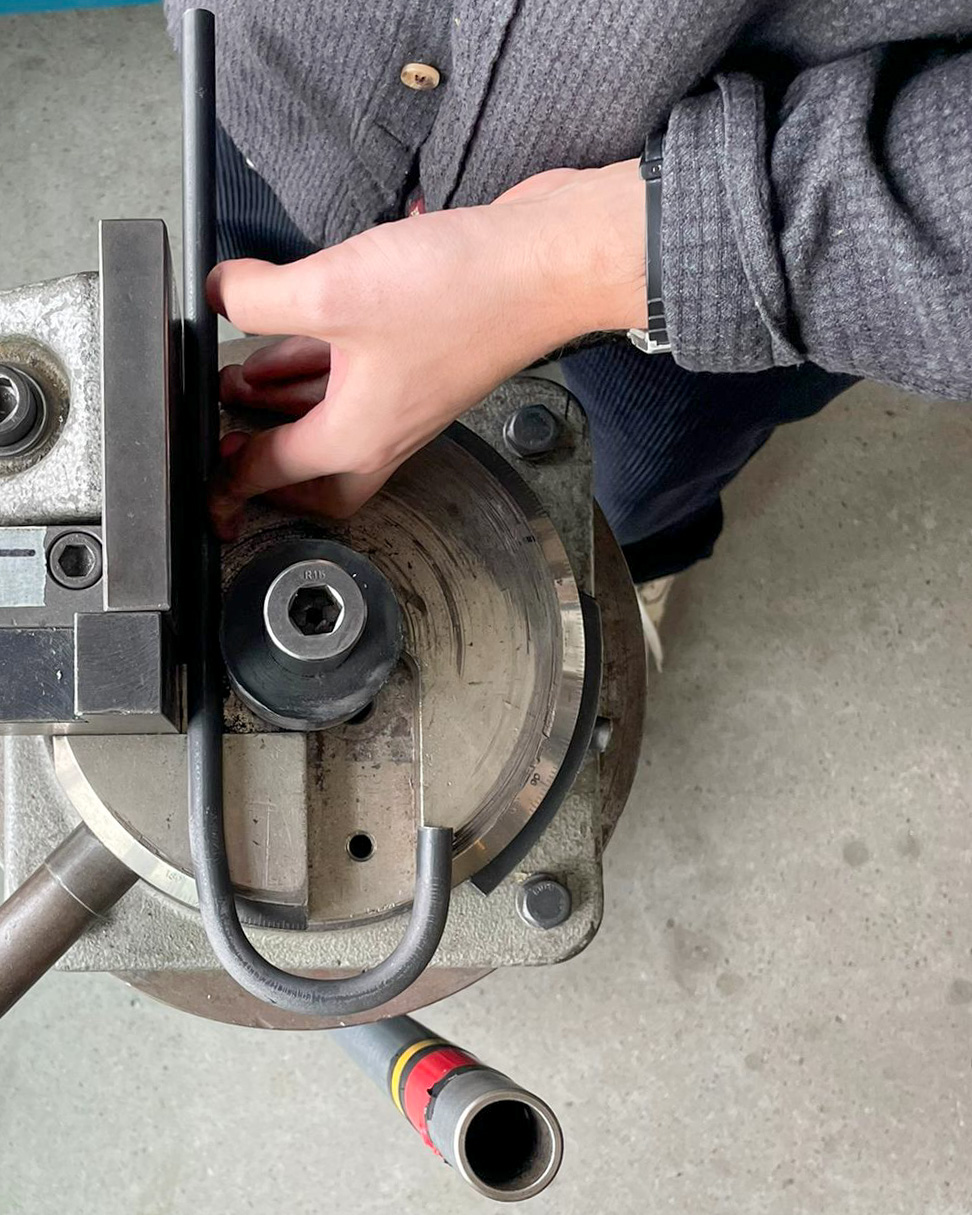

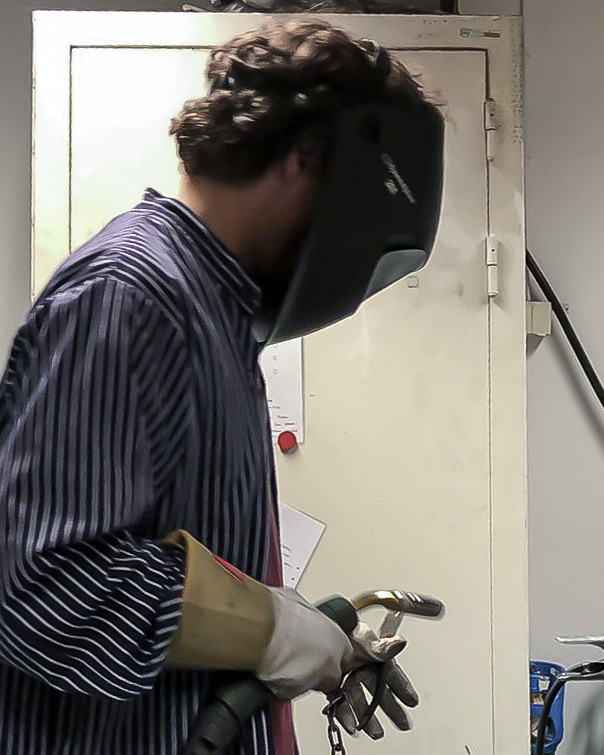
SUBUR / FINAL
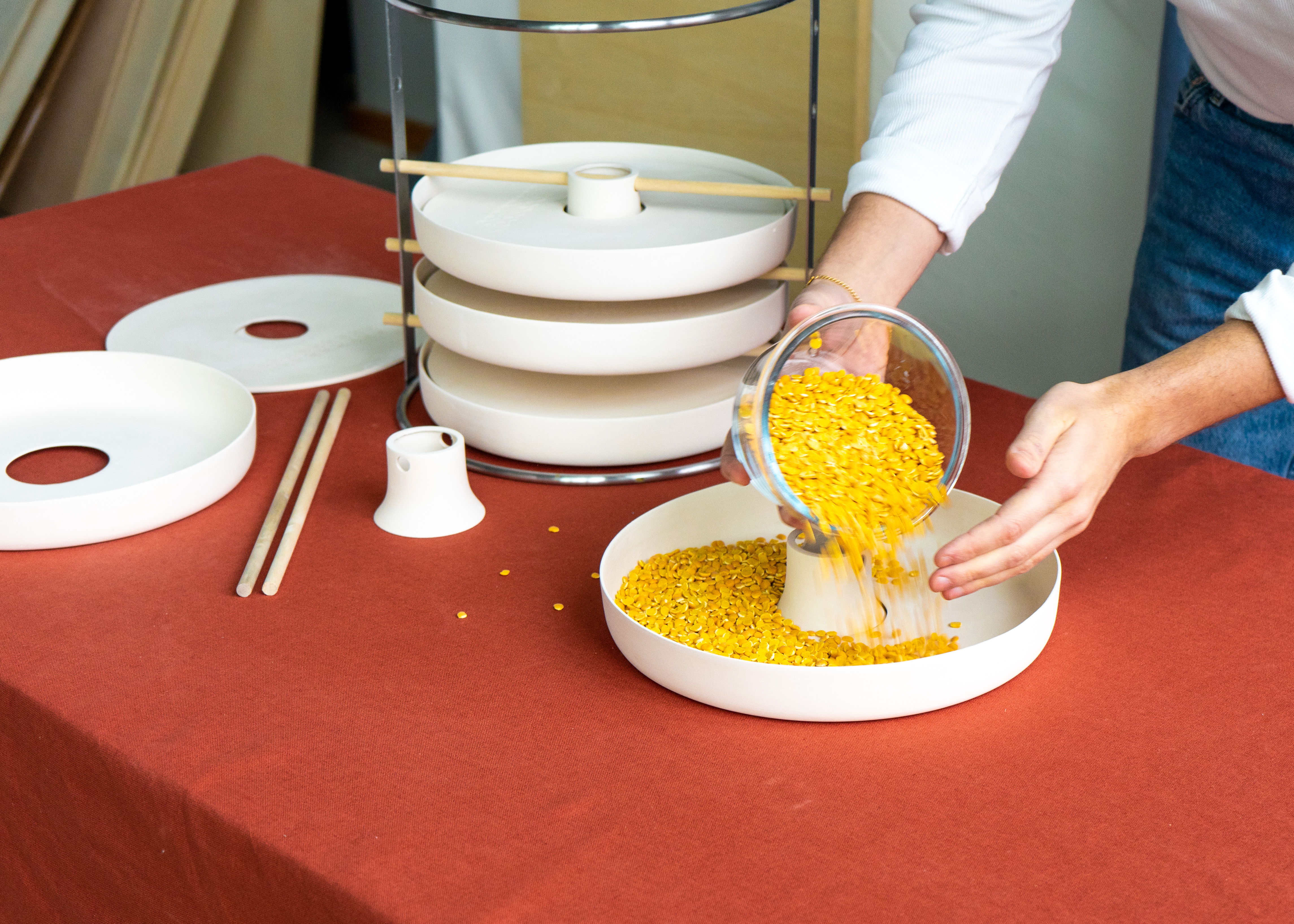
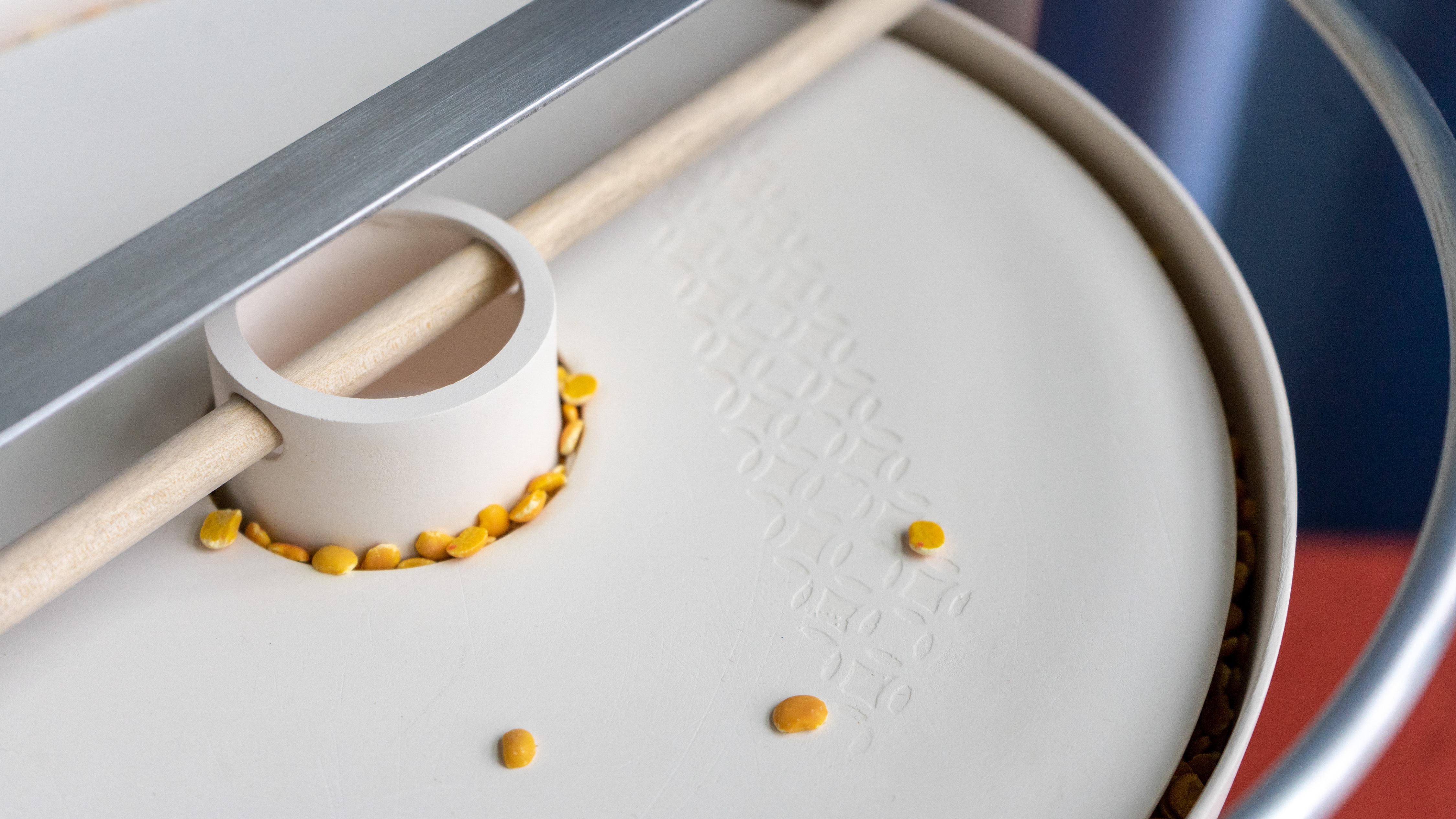
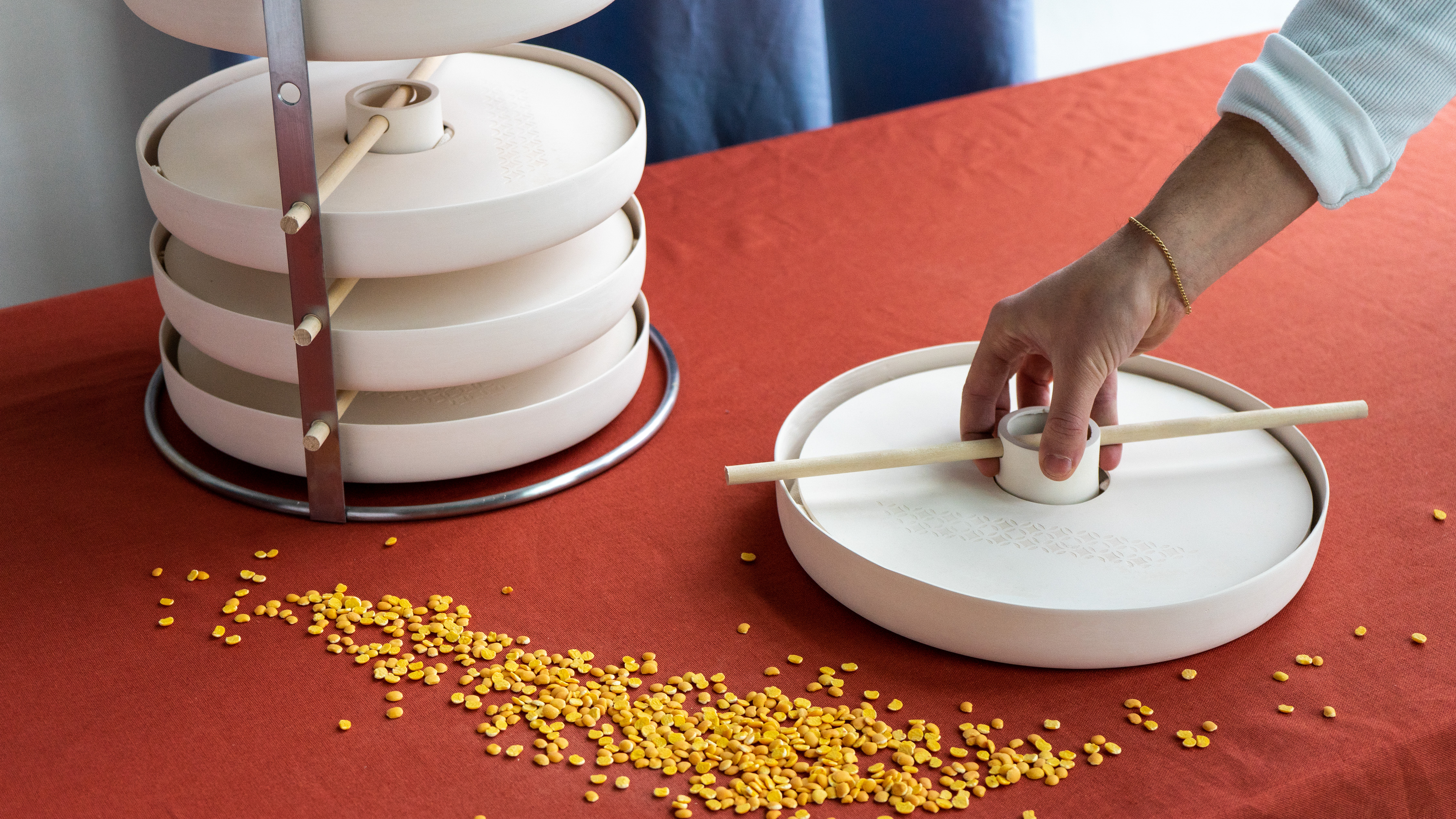
The resulting product provides Kuno Tempeh with a set of containers which
A. Decreases the need of added heat
B. Removes all waste from production
C. Exclusivly utlizes renewable materials
A. Decreases the need of added heat
B. Removes all waste from production
C. Exclusivly utlizes renewable materials